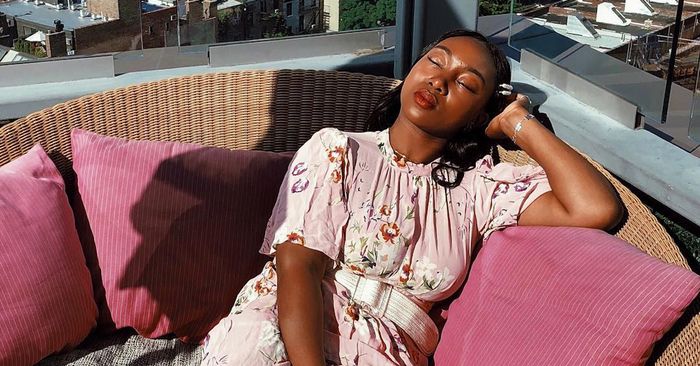
The coronavirus pandemic has created impossible hurdles for businesses across the globe. Restaurants and restaurant workers have been among the hardest hit — first by closures and lockdowns, and then by the financial burdens of reopening, including reductions in capacity and the challenge of enticing guests back into the dining room.
It’s no surprise, then, that some have predicted that this unprecedented period will spell the end of fine dining. After all, at a time of growing unemployment, reduced disposable income, and ongoing safety concerns, are there still diners who want to spend three or four hours on a tasting menu costing upwards of $200?
The answer, it seems, is yes. At many fine dining restaurants that are currently open, reservations are still filling up, and quickly. Their well-heeled guests are prepared to pay a premium; perhaps they value the spacious dining rooms, or perceive the standards of hygiene as impeccable. Or perhaps they are just hungry for an experience.
Of course, fine dining in the age of COVID-19 doesn't look quite like it did before. In fact, it may never look that way again. We spoke to seven chefs about the challenges they've encountered — and how they’re trying to create even better experiences for the new normal.
Sat Bains — Restaurant Sat Bains — Nottingham, England
Restaurants in the U.K. have been allowed to reopen for both indoor and outdoor dining since July 4 — but Bains, cautious about a possible second wave, decided to keep his namesake restaurant closed until August 26. (Under the country's furlough scheme, employees were paid 80% of their normal salary by the government.)
“None of us really know,” Bains told T+L. “We're all in the same boat. All we can do is guarantee the safety of our guests and staff, first and foremost.” Several tables have been removed for social distancing. Table-side service is being stripped back to reduce contact; instead, dishes will be finished at a new mini show kitchen in the middle of the dining room. Guests will still meet the chefs and enjoy an amuse-bouche in the Chef’s Table area next to the kitchen, but in groups of two. “There's theatre going on, so you don't feel it’s all clinical,” he explained. “You'll hopefully still get a bit of escapism for two to three hours while you’re with us.”
Bains, who specializes in gastronomic British fare with an Indian twist, is going back to his signature dishes for the reopening. “This is a time to embrace your true identity," he said, "to really put your thumbprint on to the menu.” This means meals begin and end with his iconic Five Tastes — snacks embodying sweet, salt, sour, bitter, and umami — and include seasonal British favorites like grouse and venison.
Belts will be tightened in the months to come, but Bains is very optimistic. “I do believe the resilience of this industry is incredible. We've been through recessions, and we've always come out.”
Mauro Colagreco — Mirazur — Menton, France
When Mirazur, currently number one on the World's 50 Best Restaurants list, reopened in June, the restaurant was already fully-booked until November. Reservations, all made during the quarantine, had flooded in from all over the world.
“We didn’t expect that,” said chef Mauro Colagreco. “We received a lot, a lot of reservations. It was crazy.” But even though the wait list extends into next year, he does not want to get complacent. “We are a little worried about a second wave in Europe," Colagreco admitted, which is predicted to hit "around September or October.”
Mirazur has embraced additional safety measures, but Colagreco made sure the experience did not become impersonal. In fact, he says the new parameters drove him to become more innovative and set greater challenges for himself. He took the opportunity to overhaul his menu, which, like Mirazur's organic garden, is now dictated by the biodynamic calendar. His new Lunar Menu — which follows the biodynamic categories of root, leaf, flower, and fruit — sees dishes swapped out every two or three days, in keeping with the phases of the moon. The decor and staff uniforms also rotate based on this schedule. Even the sanitizing alcohol wash, which is now presented to guests upon arrival, is blended with different herbs, flowers, and spices depending on the theme of the day.
And to put guests at ease, the first part of the meal is served picnic-style in the garden before they’re taken into the dining room. Diners love this extra step so much that it’s being added to the Mirazur experience permanently.
Mikla's rooftop terrace dining in Istanbul The rooftop terrace at Mikla, in Istanbul. | Credit: Courtesy of Mikla
Mehmet Gürs — Mikla — Istanbul, Turkey
Chef Mehmet Gürs has implemented wide-ranging new protocols at Mikla, the Istanbul restaurant known for re-imagining Anatolian cuisine. These include a concerted effort to reduce cross-contamination of surfaces: guests get their own single-use menus, for example, or they can read a digital version by scanning a QR code.
Anticipating that customers might not want to spend as much time in the restaurant, Gürs has also added a two-course alternative — featuring favorite dishes like octopus with pickled apples and braised lamb with walnut paste — to the existing five-course menu. “Surprisingly, most still want the full tasting with beverage pairing,” he told T+L. “They stay for a long time and really squeeze the most out of their experience.”
Bookings have been down as international travelers remain home, but the local clientele are loyal. “When we first opened after the lockdown," said Mürs, "we were only open from Thursday through Saturday, instead of our regular six-day week. But soon, we will go back to our normal schedule.”
Danielle Alvarez — Fred’s — Sydney, Australia
Face masks aren’t currently required at Fred’s, the farm-to-table restaurant often described as Australia’s answer to Chez Panisse. The country’s infection rates have long appeared to be under control, and the state of New South Wales, where Sydney is located, has had a relatively low number of coronavirus cases.
But, according to chef Danielle Alvarez, “it is looking like we will start requiring masks in the very near future." After beginning the reopening process back in May, NSW recently re-entered a partial lockdown due to case spikes in the neighboring state of Victoria, where masks are now mandatory.
Fred’s had already put extra precautions in place. The restaurant has an on-staff “sanitizing specialist” who focuses on cleaning high-touch surfaces, for example, and guests must provide contact tracing details with their reservation — a requirement by the government. At time of writing, Fred’s is offering a limited menu, fewer days a week. Their backup plan — a delivery service — can kick in if they’re forced to close again. “Basically, we have tried to simplify and streamline," Alvarez explained. “Restaurants have the slimmest of margins, even in 'boom' times, so when things are highly volatile like they are now, you have to become more efficient with every decision.”
Just a few months ago, “when the situation looked very hopeful for Australia, we had people nearly breaking down the door to get a booking," said Alvarez. "We couldn’t fit them in, given the capacity restrictions." But these days, "bookings are pretty far down again," as the turn for the worse in Melbourne has shaken Sydney residents. “This puts us in the very unfortunate 'in between' position," Alvarez told T+L. "We are still operating and trying to do our best, but if the bookings go much lower, it will be very difficult to remain open.”
Gastronomy Box from Tate Hong Kong and dining date box From left: a Gastronomy Gourmet Box from Tate Dining Room; the Date by Tate home-dining experience. | Credit: Courtesy of Tate HK
Vicky Lau — Tate Dining Room — Hong Kong
Hong Kong’s dining scene has been squeezed by both the recent protests and the coronavirus. Right now, the city is in the middle of its third wave, which triggered a sudden ban on all restaurant and bar service in late July. The shutdown has since been reversed, but it highlights the uniquely precarious position of restaurants in the city.
Tate Dining Room, a restaurant at the intersection of French and Chinese cuisine, has implemented extensive safety measures. Partitions have been added to tables, which are spaced at least five feet apart, and staff are masked and gloved at all times. All furniture is disinfected with steam after a table is cleared. Guests go through a similarly rigorous routine: they are temperature-tested on entry and must wear masks until their food arrives, putting them back on “immediately” after finishing their meal. But this hasn't negatively impacted the diner experience, according to chef Vicky Lau. “I think people’s mindset has changed,” she said, explaining that most guests are comforted knowing the restaurant wasn’t skimping on safety.
Dining at Tate does look different now: Lau has completely scrapped dinner and launched a lunch service for the first time, a response to requests from diners. She has also added an in-home dining experience called Date by Tate with "Gastronomy Gourmet Boxes" for delivery. Produce from France and Japan, which became too “risky” to fly in due to travel restrictions, have been removed from the menu. Quality local produce is now king, and it’s something Lau wants to keep championing.
Regarding the recent challenges, she told T+L, “Hong Kong is a resilient city, and it will come back stronger than before. This pandemic has allowed us at Tate to do things a little differently.”
Virgilio Martinez — Central — Lima, Peru
Experimental Peruvian restaurant Central has faced many challenges in reopening — not least because Peru is still in an official state of emergency. It has been made possible with government-prescribed protocols that include six feet between tables, temperature tests at the door, and mandatory masks upon entry. Currently, the dining room is operating at 50% capacity.
Notably, the hours have tightened, with service lasting from 12:30 to 7pm to help diners comply with the nationwide 10pm curfew. “We've never worked this way,” chef Virgilio Martinez told T+L. “In South America, when we go to dinner, it has to be late." Now, there isn't a clear distinction at Central between lunch and dinner. "We are kind of mixing everything together.”
The full tasting menu, which lasts some three or four hours, is still available, and still focuses on indigenous ingredients from the Peruvian landscape. But for the first time, the restaurant also offers a shorter experience for cautious diners who “don’t want to spend more than two hours” away from home. Happily, says Martinez, locals are flocking back.
Dining room of Hiša Franko in Slovenia The dining room of Hiša Franko. | Credit: Suzan Gabrijan/Courtesy of Hiša Franko
Ana Roš — Hiša Franko — Kobarid, Slovenia
Hiša Franko, Slovenia’s premier destination restaurant and one of our 2019 World's Best Restaurants, has been relatively unscathed by the pandemic, in large part thanks to the low infection rates in the country. There have been just over 2,000 cases in Slovenia, and none in Kobarid. Even so, wearing masks remains mandatory. For guests, masks can only come off at the table — Roš insists on it.
“When we receive the guests in the kitchen, or bring them to the wine cellars, we require every guest to use a mask,” Roš explained. “It can be difficult at times, because there are people who don't take the rules seriously enough. But we are pretty rigid.” According to the chef, the fact that staff are always masked — even for photos — puts guests at ease.
Hiša Franko continues to serve the innovative Slovenian menu that has made it one of the best restaurants in the world. "People are super happy to be back," Roš told T+L — "just happy to be able to dine outside of their home.”

















